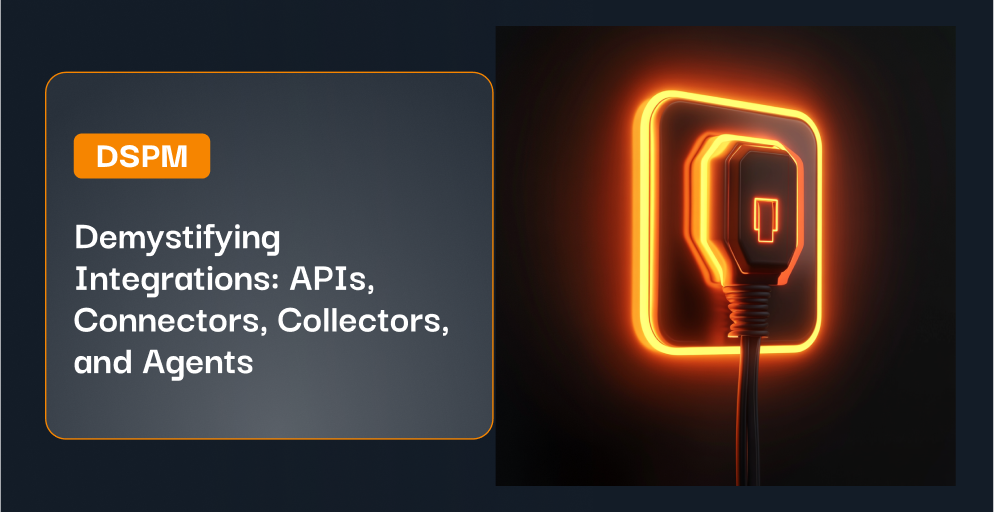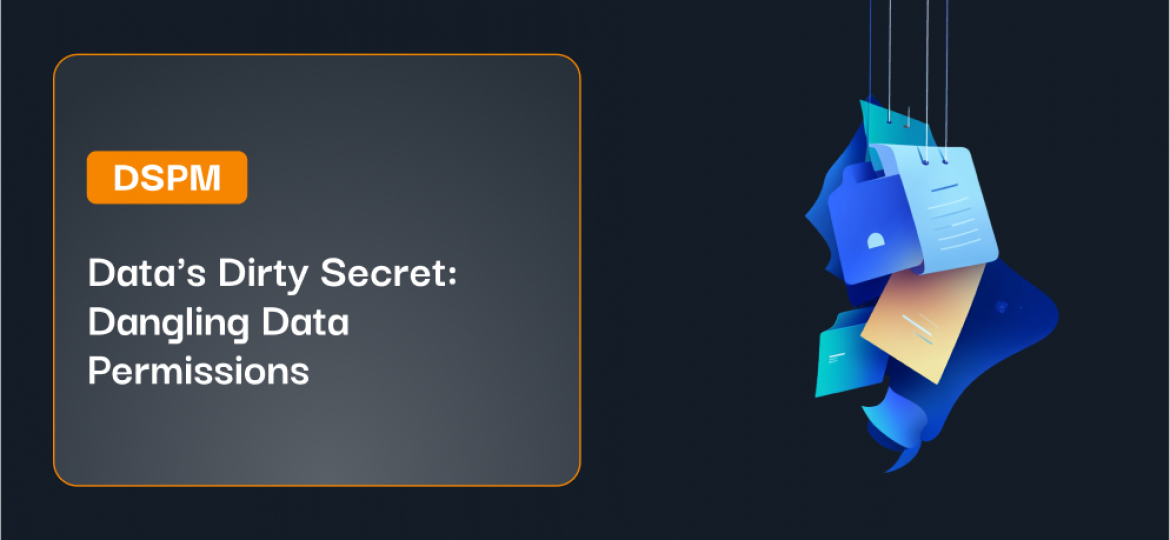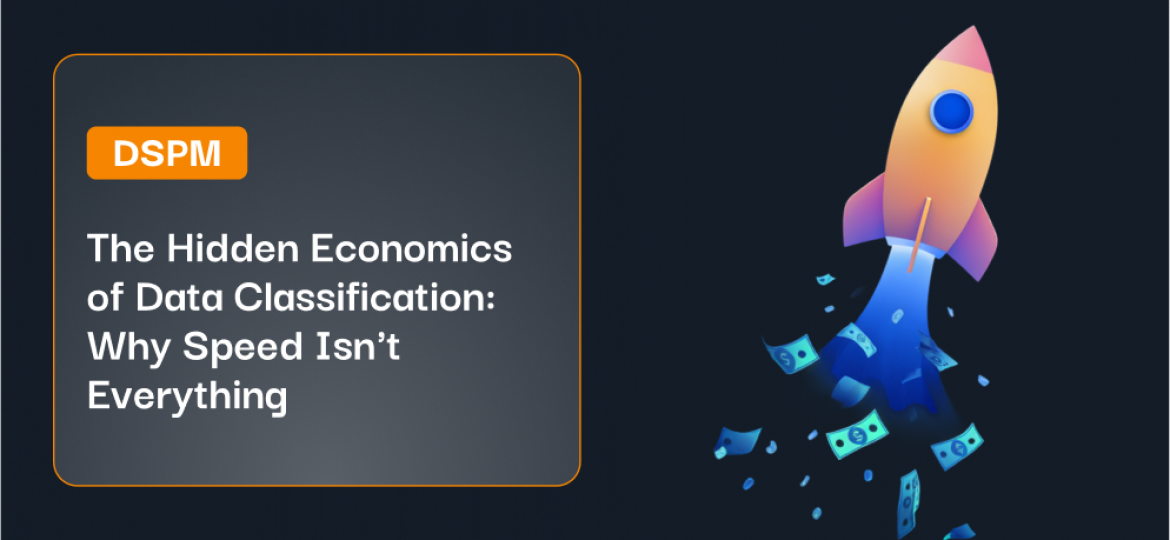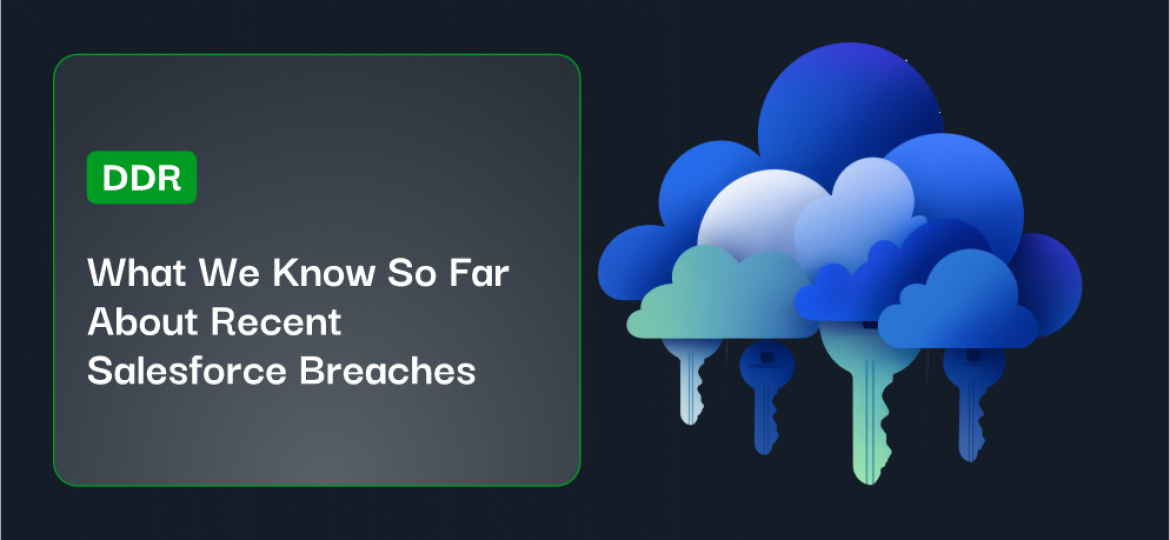If you’ve been evaluating Data Security Posture Management (DSPM) solutions, you’ve likely encountered marketing language that liberally —and often incorrectly— uses terms like APIs, connectors, collectors, agents or agent-less.
Many security vendors deliberately blur the lines between these distinct and overlapping integration components, creating confusion that makes meaningful comparison difficult for even the tech savvy. This explainer cuts through the marketing noise to clearly define what each component does, how they differ, and most importantly, when you should use each in your security strategy. Understanding these distinctions will help you make informed decisions that optimize both security coverage and operational efficiency.
What Are These Components?
This market confusion serves vendors well, but it leaves security leaders at a disadvantage when designing efficient, effective security architectures. The reality is that each of these components has specific purposes, benefits, and trade-offs.
APIs: The Foundation Layer
What they are: Application Programming Interfaces (APIs) are standardized communication protocols that allow different software applications to interact with each other.
How they work: APIs define the methods and data formats that applications can use to request and exchange information. They typically follow REST or GraphQL standards and return data in formats like JSON or XML.
Key characteristics:
- Provide a standardized interface for system communication
- Enable secure data exchange between different applications
- Support various authentication mechanisms
- Allow programmatic access to application functionality
APIs are the building blocks to enable a solution to retrieve data from and send commands to various systems across your environment without additional coding.
Connectors: Pre-Built Integration Modules
What they are: Connectors are ready-made integration components designed to simplify connections to specific systems or applications.
How they work: Connectors abstract away the complexity of direct API interactions by handling authentication, data mapping, and protocol differences. They’re typically maintained by the security vendor and updated as source system APIs evolve.
Key characteristics:
- Purpose-built for specific applications (e.g., AWS, Salesforce, Workday)
- Handle authentication and authorization automatically
- Manage data transformation between systems
- Reduce development and maintenance efforts
Connectors essentially provide a plug-and-play approach to integration, eliminating the need to build custom connections to common systems.
Collectors/Sensors: Distributed Data Gatherers
What they are: Collectors or Sensors are specialized components that gather security-relevant data from specific environments or regions.
How they work: Collectors or Sensors are deployed in specific locations (geographic regions or cloud environments) to gather, potentially analyze, and then forward security data to a central management platform.
Key characteristics:
- Can be deployed in specific geographic regions to address data sovereignty
- Operate within cloud environments to collect cloud-specific security data
- Often perform initial filtering or aggregation to reduce data transfer volumes
- Provide a lighter footprint than full agents while offering more capabilities than simple API connections
Collectors bridge the gap between direct API integration and full agent deployment, offering a balanced approach for distributed environments.
Agents: Local Processing Components
What they are: Agents are software components installed directly on target systems to monitor, analyze, and potentially enforce security policies locally.
How they work: Agents run continuously on host systems, collecting detailed information and performing local analysis before sending results to the central security platform.
Key characteristics:
- Execute directly on target systems (servers, endpoints, etc.)
- Perform continuous local monitoring and analysis
- Can function even during network disruptions
- Typically require more resources and maintenance than other integration methods
Agents provide the deepest level of visibility and control but come with higher resource requirements and management overhead.
When to Use Each Component
Understanding when to use each component is critical for optimizing your security architecture. The most effective DSPM architectures follow a pragmatic approach that combines these components strategically:
Use connectors as your first choice
Begin with pre-built connectors for common systems and data sources. This provides the fastest deployment and lowest maintenance overhead.
Connectors should be your default integration method when:
- Connecting to common enterprise systems with standard APIs
- You need rapid deployment with minimal development effort
- The target systems are reliably accessible from your DSPM solution
- Maintenance efficiency is a priority
Example: When monitoring cloud environments like AWS, Azure, or GCP, connectors provide efficient access to configuration and security data without the overhead of agents.
Leverage standalone API integrations until connectors are available
For systems without pre-built connectors, develop custom integrations using the available APIs.
When Are Direct API integrations Needed?
Consider custom API integration when:
- Pre-built connectors aren’t available for the target system
- You need customized data collection beyond what connectors provide
- You have development resources to build and maintain custom integrations
- The system requires specialized authentication or interaction patterns
Example: For proprietary or legacy systems without available connectors, custom API integration may be necessary despite the additional development effort.
Deploy collectors/Sensors where needed
Add collectors or Sensor in regions or cloud environments where data locality matters or where initial filtering provides performance benefits.
When Are Collectors Needed?
Deploy collectors when:
- Data must remain within specific geographic regions for compliance
- You need to gather data from distributed cloud environments
- Initial data filtering would significantly reduce unnecessary data transfer
- You need more capabilities than API connections but full agents would be excessive
Example: For multinational organizations subject to GDPR, collectors can analyze European customer data locally, sending only aggregated findings to the central platform.
Use agents selectively
Implement agents only where their capabilities justify the additional resource usage and management overhead.
When Are Agents Needed?
Agents are useful for scenarios where:
- Continuous local monitoring is required even during network disruptions
- Bandwidth constraints make transferring raw data impractical
- Deep OS level visibility or real-time analysis is essential
- Local policy enforcement capabilities are needed
Example: For high-value assets processing sensitive financial transactions, agents provide the real-time monitoring and deep visibility justified by the additional resource usage.
Why This All Matters
Understanding the differences between APIs, connectors, collectors, and agents enables security leaders to make informed architectural decisions when implementing DSPM solutions. By using connectors as the primary integration method, deploying collectors for regional or cloud-specific requirements, and implementing agents only where truly necessary, organizations can build more efficient and effective security architectures. The architectural choices you make have significant business implications:
- Resource Efficiency: Overusing agents can substantially increase computational overhead and management costs. Organizations that replace unnecessary agents with connectors typically see 30-60% reductions in resource utilization.
- Deployment Speed: Connectors can be implemented in minutes by someone with no technical background, while custom API integrations might take days to figure out. Choosing the right components accelerates your security program implementation.
- Maintenance Requirements: Each agent instance requires ongoing updates and monitoring. Connectors, being maintained by vendors, reduce this burden considerably.
- Coverage and Consistency: A strategic mix of components ensures comprehensive coverage across diverse environments without creating security blind spots.
- Compliance Capabilities: Using collectors in specific regions helps address data sovereignty requirements without compromising security visibility.
The right approach isn’t about choosing one component exclusively, but rather combining them strategically based on your specific business requirements, compliance needs, and resource constraints. This balanced strategy delivers comprehensive security coverage while optimizing resource utilization and maintenance efforts.
As your organization’s data landscape evolves, this understanding of integration components will help you adapt your security architecture to new challenges while maintaining operational efficiency.






